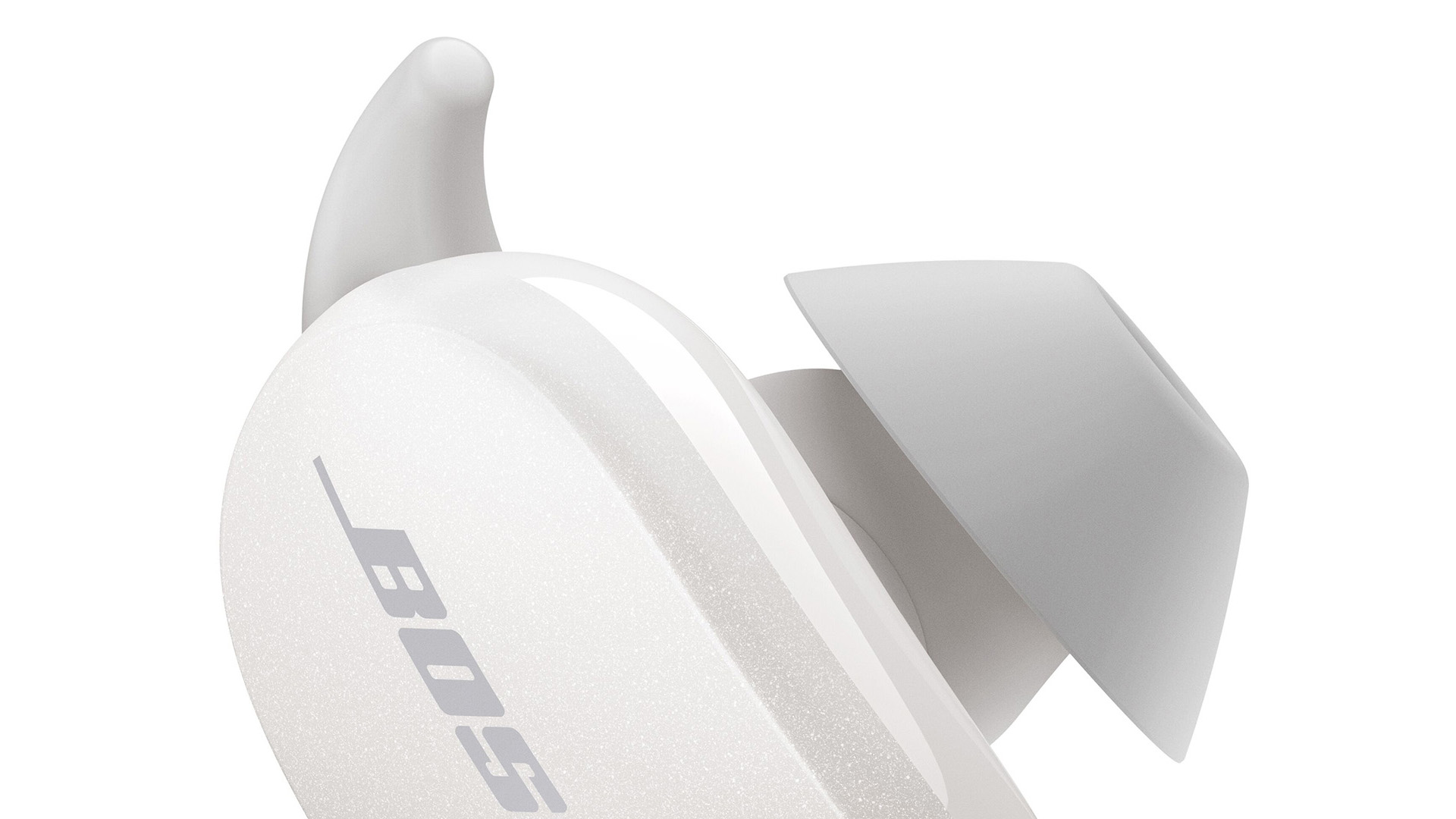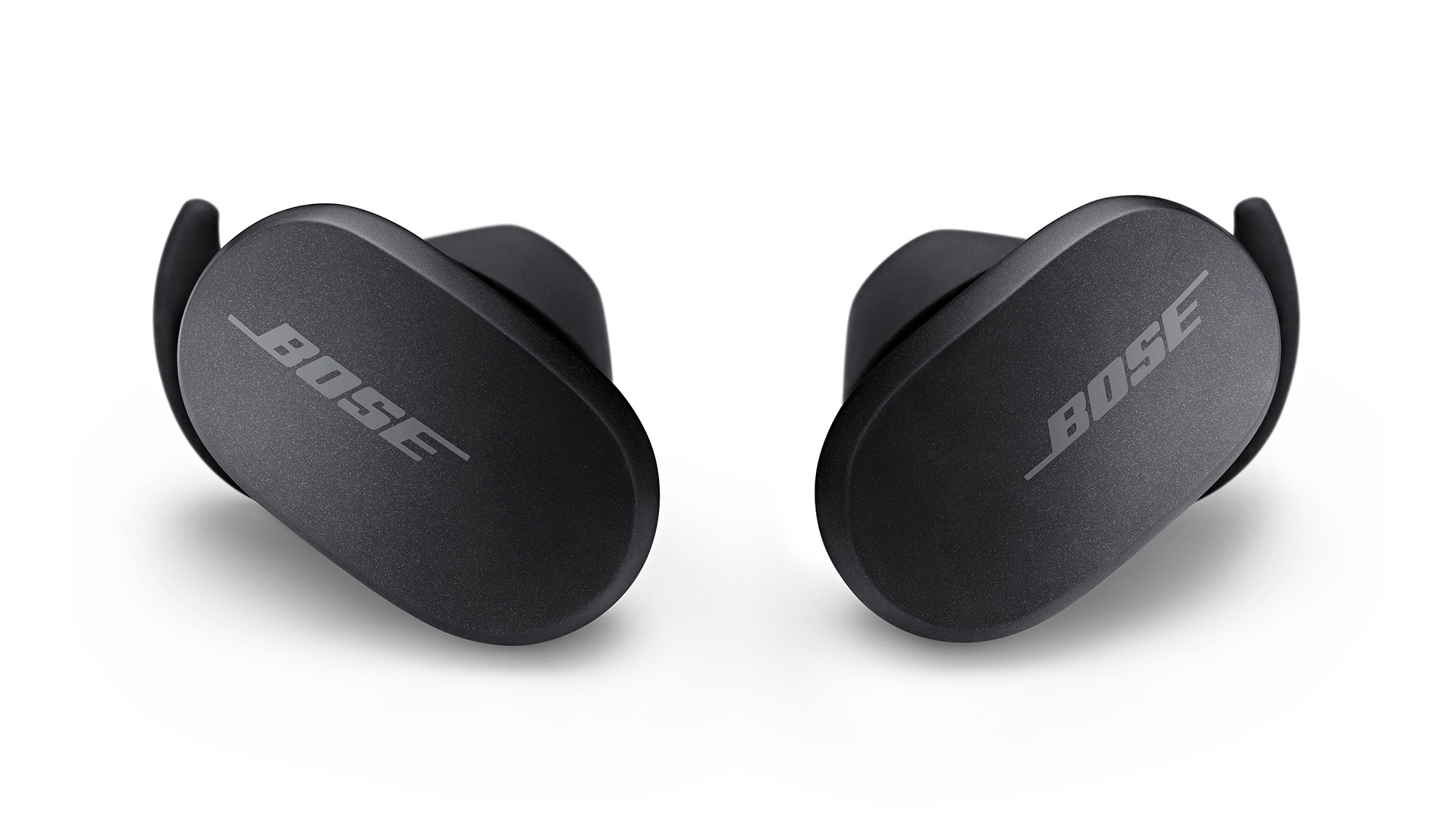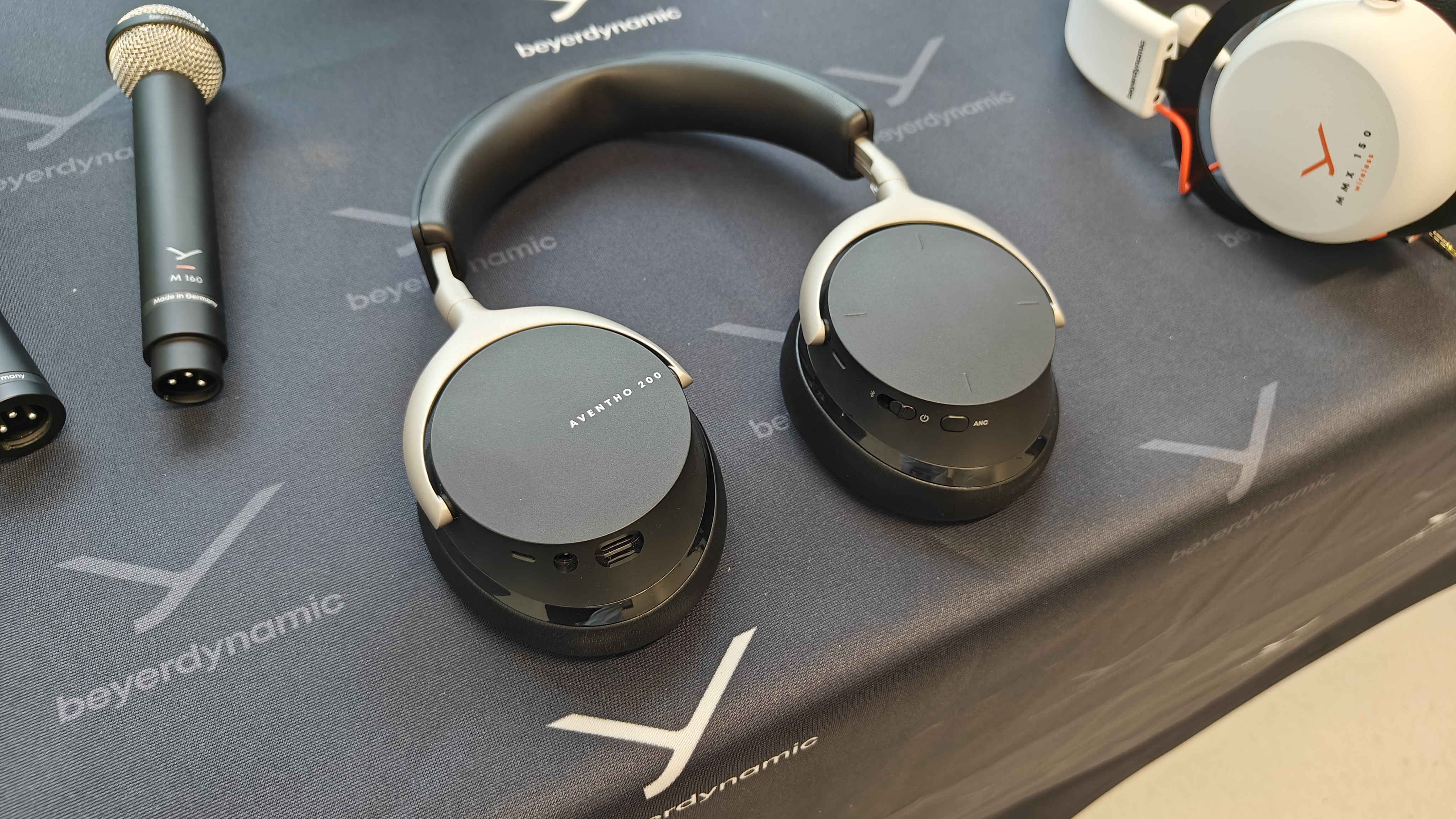Sony WF-1000XM3 vs Bose QuietComfort Earbuds: which are better?
Which wireless earbuds should earn a place in your ears?

When it comes to wireless earbuds, Sony and Bose are two of the best brands out there. Here we're comparing the two premium models: the Sony WF-1000XM3 and Bose QuietComfort Earbuds.
They're both completely wireless, both boast superb sound and both offer noise-cancelling technology. But which is more worthy of your hard-earned money? Let's run down the main features and specs and see which is the right pair of wireless, noise-cancelling earbuds for you.
- These are the best headphones for all styles and budgets
Sony WF-1000XM3 vs Bose QuietComfort Earbuds: price
The Sony WF-1000XM3 are much older than the Bose QuietComfort Earbuds, and while their launch prices weren't that different, the Sonys can be picked up much cheaper now.
The Sonys launched at £220 ($230), but now sell for around £70 ($80) less than that. The QuietComfort Earbuds launched at £249 ($280, AU$399), and while they too are available at a discount, it's a much smaller price cut than the Sonys.
Sony WF-1000XM3 vs Bose QuietComfort Earbuds: battery life

Battery life is a key consideration when buying a pair of wireless earbuds. After all, even the sweetest-sounding pair won't be much good if they conk out after five minutes.
Sony's pair manage six hours of run time from the earbuds themselves, plus an additional three charges from the supplied carry case. That gives you a total of 24 hours of juice before you need to find a plug.
Turn off noise cancelling, and these numbers grow even more impressive: the battery life jumps to eight hours, with the case bumping it up to an impressive total of 32 hours. In a rush? Just 10 minutes of charging time is enough to breathe 90 minutes of life into them.
The latest hi-fi, home cinema and tech news, reviews, buying advice and deals, direct to your inbox.
The QuietComfort Earbuds can't match this. They give you six hours from a single charge, with the charging case supplying an extra two charges, making 18 hours in total. That’s decent, but no match for the Sonys.
A 15-minute quick-charge should give you a couple of hours if you’re caught short. Which is very similar to what the Sonys offer.
**Winner** Sony WF-1000XM3
Sony WF-1000XM3 vs Bose QuietComfort Earbuds: design and comfort

The Sonys look pretty unobtrusive, but they hide some pretty neat tech. The outer section of each earpiece is smooth plastic with a small, glossy, circular patch on the surface of both left and right buds. These patches are actually touch sensitive control pads; the functions vary depending on the earpiece.
Sony has implemented a ‘Tri-hold structure’ for the WF-1000XM3, which focuses on three key points in your ear to give the headphones better support. There is even a special high-friction rubber on the surface of the main chamber to help with stability.
Sony provides seven different sizes of earbud; four ‘hybrid silicone’ buds and three ‘triple-comfort’ buds, which feel slightly thicker than the standard ones. It’s a good selection, and more than you get with many rivals. The headphones enter the ear at a slight downward angle, you then have to twist them up to lock them in place. The intrusion is kept to a minimum, but you still feel nicely isolated from outside noise.
Overall, they're a comfortable, balanced fit – snug without being too intrusive. They’re not designed specifically to be sports earbuds, though the locked-in-place fit does help make them an option.
And what of the QuietComfort Earbuds? Bose's buds are its first to combine both noise-cancelling and true wireless technologies. As such, there's a lot to pack in, which makes them a bit on the chunky side. Still, they feel nice and premium, and the winged eartips boast a smooth, matte finish, too, helping heighten the impression of quality.
There’s a choice of small, medium and large tips – this seems a little stingy, but the edges of the tips are so generous in size, it makes it easy to get a good seal. You don’t need to drive them in like tent pegs to feel the isolation, which is great for comfort levels. We’re also fans of how simple it is to swap the tips around. Just slide them on and off the earbuds and you can have a new pair fitted in seconds.
The Bose earbuds feel lightweight and we have no issues listening for a few hours at a time. For the average commute or exercise session (the QuietComforts are both sweat and weather-resistant) they do the job very well indeed.
**Winner** Draw
Sony WF-1000XM3 vs Bose QuietComfort Earbuds: features

Like the Bose pair, the Sonys feature noise cancellation tech to block out unwanted sounds. And like other true wireless earbuds, the Sony WF-1000XM3 come with their own charging case. This doesn't feature a battery indicator, but the red LED light on the front blinks rapidly if it doesn’t have enough juice to fully charge the headphones.
Want to see the exact battery level? You'll need the Sony Headphones Connect app on your smartphone. This also lets you alter the built-in equalizer, enable Amazon Alexa or Google Assistant support and flip the functions of the touch controls – useful for any left-handers who feel more comfortable this way.
Speaking of touch controls, the XM3's are very good indeed. The left control pad is for turning noise cancelling on or off (it’s on by default) and engaging the Ambient Sound mode, which allows in a bit more outside noise. And the right pad is for playback controls. Remove an earpiece and it'll automatically pause what's playing. Place it back in your ear and you’ll pick up where you left off.
The controls take a little time to get used to, particularly as there’s a small target for your fingers to aim for, but they are a lot better than some. Especially since the firmware update that adds volume controls.
Bose's charging case is a chunky affair, but it feels solid and built to last. You need to press a button on the front to gain entry, which is unusual for a pair of wireless earbuds, as most just tend to settle for a magnetic lid. A row of LEDs on the front of the case shows you how much battery life is left inside.
When first using the QuietComfort Earbuds, open the case and have the Bose Music app (for Android and iOS) to hand. You’ll be prompted to pair and guided through all the key features.
By default, you touch and hold your finger on the touchpad of the right earbud to access voice assistants or decline a call. Double-tap to play/pause and answer. Touch and hold your finger on the left earbud to skip a track or check the battery level.
You can customise some features and controls based on what you use the most often, and – just like the Sonys – you can control volume from the buds themselves.
Noise cancelling is Bose's forte, so it's no surprise to hear that here the function is more advanced than most. The Bose music app gives you a noise-cancelling sliding scale which ranges from zero (no noise-cancelling) to 10 (maximum noise-cancelling). Through the app you can assign three different positions – say 0, 5 and 10 – as ‘Favourites’ and cycle through them by double tapping the left earpiece. Very handy.
The QuietComfort Earbuds more than live up to their billing, cutting out huge swathes of background noise on the maximum setting. And if you want more of the outside world to seep in, the headphones adapt perfectly. Take an earbud out to have a conversation and the Bose buds don’t just pause playback, they automatically cut the noise-cancelling in the earbud left in your ear so you can hear more clearly.
**Winner** Bose QuietComfort Earbuds
Sony WF-1000XM3 vs Bose QuietComfort Earbuds: sound quality

The Sony WF-1000XM3 produce a wonderfully musical sound. They have subtlety in spades, and deliver bass notes with power and poise. This kind of dynamic dexterity is hard to communicate in big on-ear headphones, never mind small in-ear designs.
They also show an impressive turn of pace. Bass is weighty and wholesome, but punchy and agile too. Vocals are prominent, but don’t over power. There’s a real sense of musicality and balance.
The level of transparency is very well judged too – poor recordings aren’t dressed up, but better-than-average tracks really sing.
Part of the credit has to go the noise cancelling. They can’t match a pair of over-ear noise-cancelling headphones but it’s difficult not to be impressed with what Sony has managed to do with such small earbuds.
So how do the Bose QuietComfort Earbuds stack up? Very well, we're happy to report. Their excellent noise-cancelling skills allow their superb sound quality to shine through untarnished.
Their sense of enthusiasm and excitement is infectious – there's power, poise and a fantastic sense of dynamism. Bass notes sound full-bodied, go deep and the QuietComfort Earbuds squeeze out lots of detail.
We would describe the Bose sound as one full of natural warmth and richness, but the music never sounds smothered – even with the noise-cancelling on its highest setting. An impressive performance from Bose's first true wireless, noise cancelling pair.
**Winner** Draw
Sony WF-1000XM3 vs Bose QuietComfort Earbuds: verdict
Two pairs of wireless earbuds, two fantastic listening experiences. So which should you buy?
It really depends on your priorities. The Sonys offer superb value, better battery life, a lean, crisp sound and more sizes of ear tips, while the QuietComfort Earbuds have more advanced noise-cancellation and a fuller, richer sound.
Overall, thank in no small part to the price drop, we think the Sony WF-1000XM3 represent the best performance-per-pound value but the Bose QuietComfort Earbuds are undoubtedly an excellent alternative.
**Winner** Sony WF-1000XM3
MORE:
Read the full Sony WF-1000XM3 review
Read the full Bose QuietComfort Earbuds review
Here's our guide to the best wireless in-ear headphones
And here's what's next: Sony WF-1000XM4: what to expect
What Hi-Fi?, founded in 1976, is the world's leading independent guide to buying and owning hi-fi and home entertainment products. Our comprehensive tests help you buy the very best for your money, with our advice sections giving you step-by-step information on how to get even more from your music and movies. Everything is tested by our dedicated team of in-house reviewers in our custom-built test rooms in London, Reading and Bath. Our coveted five-star rating and Awards are recognised all over the world as the ultimate seal of approval, so you can buy with absolute confidence.

